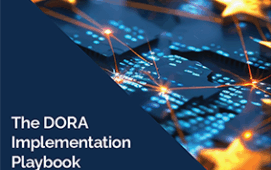
The Global LEI Foundation (GLEIF) and Open Ownership, provider of a beneficial ownership database funded by donors including government agencies, have collaborated to integrate Legal Entity Identifiers (LEIs) into Open Ownership datasets produced in line with the Beneficial Ownership Data Standard (BODS), an open standard providing guidance on collecting, sharing and using high-quality data on beneficial ownership.
The goal of the collaboration is to promote greater transparency in corporate ownership and control to support safer, faster, and more efficient payment activities globally and a more secure financial landscape. It does this by enhancing the usability of beneficial ownership data by allowing Open Ownership’s database to be mapped to other datasets using the LEI.
The partners suggest the collaboration also has potential to improve screening processes and enhance support for anti-money laundering (AML), counter-terrorist financing (CTF), customer due diligence and sanctions enforcement efforts globally.
The Open Ownership database includes over 27 million beneficial ownership records for 9.6 million companies globally and makes the data openly available. The data is reconciled with the Open Corporates database that contains public data sourced from national business registries in 140 jurisdictions.“This open data initiative is an important step towards addressing financial crime,” says Stephan Wolf, CEO at GLEIF. “Publicly available, high quality and electronically accessible company data is the foundation on which to combat illicit finance and address hidden risks in financial markets and global supply chains. The LEI is a key data connector that enables critical data sets to be matched. By linking it to beneficial ownership information its value increases.”
Stephen Abbott Pugh, head of technology at Open Ownership, adds: “By building on the mapping of OpenCorporates IDs to the LEI, and including the identifier alongside OpenCorporates IDs and national identities within the Open Ownership database, we can do more to disambiguate entities and extend opportunities for data users to connect our beneficial ownership data with other datasets.”
In addition to providing OpenCorporates to LEI mapping, GLEIF has also certified mapping relationships between S&P Global’s Company ID, SWIFT’s Market Identifier Code (MIC) and Business Identifier Code (BIC), and the Association of National Numbering Agencies’ (ANNA) International Securities Identification Numbers (ISIN). Using the LEI, users of the Open Ownership data can now move across this web of identifiers to access further information on securities issuances or market listings of legal entities.
Subscribe to our newsletter




